#777 Beyond the bias of stone
Waterlogged: Examples and Procedures for Northwest Coast Archaeologists
by Kathryn Bernick (editor)
Pullman, WA: Washington State University Press, 2019
$32.95 (U.S.) / 9780874223668
Publisher’s note: Canadian residents can obtain WSU titles online via Indigo and other bookstores. Canadian bookstores can purchase WSU books through Ingram.
Reviewed by Bob Muckle
*
 Any archaeologist working in British Columbia can tell you that the material record of past human cultures is strongly biased towards inorganic materials, especially stone tools. Tools and other implements made of wood or other organic remains occasionally do survive, especially when they are waterlogged, but they are underrepresented in the archaeological record. This is due partly to the perishable nature of organic remains, and partly to the failure of many archaeologists to appreciate where to search — and then identify, excavate, and care for — waterlogged artifacts.
Any archaeologist working in British Columbia can tell you that the material record of past human cultures is strongly biased towards inorganic materials, especially stone tools. Tools and other implements made of wood or other organic remains occasionally do survive, especially when they are waterlogged, but they are underrepresented in the archaeological record. This is due partly to the perishable nature of organic remains, and partly to the failure of many archaeologists to appreciate where to search — and then identify, excavate, and care for — waterlogged artifacts.
Waterlogged: Examples and Procedures for Northwest Coast Archaeologists, edited by Kathryn Bernick, brings much of the value of waterlogged artifacts into focus, and in doing so provides an excellent guide for archaeologists searching for water-saturated deposits, recovering waterlogged artifacts, and preserving them. The book offers practical procedures and many examples of successful, interesting, and significant research.
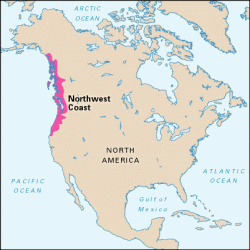
The subtitle of the book refers to the Northwest Coast. This refers to the Northwest Coast Culture Area, which extends from Alaska through British Columbia and southward through Washington and Oregon. Most of the book’s examples, however, come from British Columbia.
Targeted primarily at professional archaeologists, Waterlogged is so well written and covers such interesting discoveries that it is likely to be of interest to a much broader readership and conceivably to anyone interested in archaeology in British Columbia.
Vancouver-based Kathryn Bernick, an expert in wet-site archaeology and waterlogged artifacts, has done an excellent job of bringing this volume together in 11 chapters by 17 authors from specialties in academic archaeology, consulting archaeology, and museum archaeology.
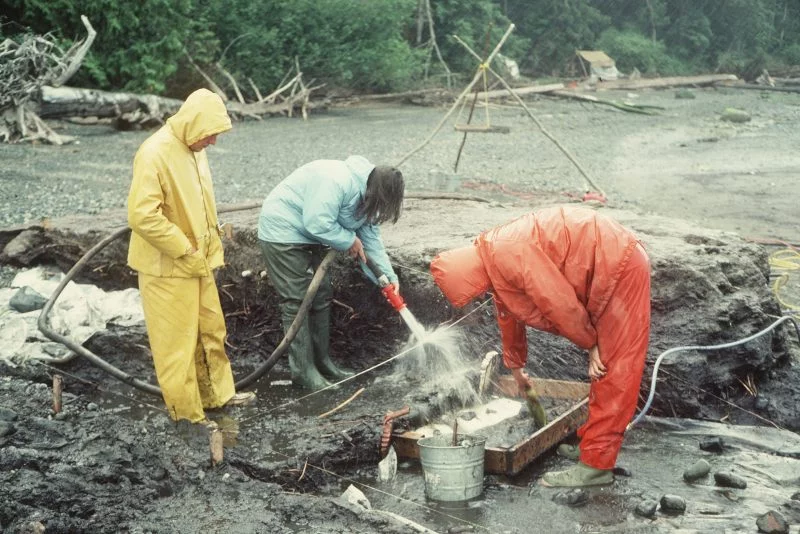
In the first chapter, “Introduction: Wet-Site Archaeology from a Northwest Coast Perspective,” Bernick discusses some nuances in relevant terminology, such as wet-sites and wetlands. She makes it clear that the regional focus is on “cultural vegetal objects” preserved in water-saturated deposits, especially wood and wood fibre and including roots and withes. She also includes a brief historical review of wet-site archaeology on the Northwest Coast and contextualizes it globally.
The following 10 chapters are divided into three sections: “Discovery and Recovery,” “Fresh Perspectives,” and “Unexpected Finds.”
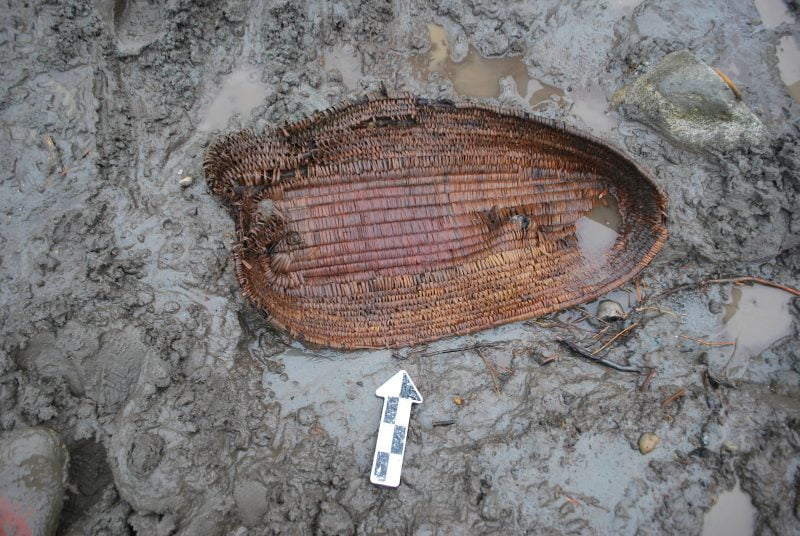
Part 1, “Discovery and Recovery,” includes two chapters. In “Wet Sites: A Guide to Finding Them,” Morley Eldridge focuses on determining where wet sites are likely to be found and how to recognize them. This may involve an understanding of local geomorphology. Eldridge provides several examples from his own experience of how to find wet sites, including looking in coastal areas at low tide and along river banks at times of low water volumes. He also urges readers to take note of such things as smell, the consistency of the ground, the qualities of peat, and how to recognize waterlogged wood and cut wood chips.
Next up is “Recovering and Caring for Wet Perishable Artifacts: Strategies and Procedures,” where Kathryn Bernick provides a guide for archaeologists in the recovery of waterlogged artifacts, including draining water from excavation units and excavating with water pressure. Bernick also explains preservation techniques and lists the essential supplies that should be on hand for the recovery of waterlogged artifacts.

Part 2, “Fresh Perspectives,” has four chapters. In “Perceptions of Wetland Ecology in Cowichan Traditional Territory, Vancouver Island,” Genevieve Hill presents a critical view of archaeology in the region, arguing that wetland areas are often overlooked by archaeologists. Based on First Nations sources, she concludes that many significant archaeological sites are to be found in wetlands.
In “Blueberry Fields Forever (Not!): The Carruthers Site, Lower Fraser Valley, British Columbia,” Stan Copp, Tanja Hoffmann, and Emily Wilkerson describe archaeology at a wetland site being prepared for commercial blueberry fields. Waterlogged artifacts included pounded cedar bark, a piece of wood exhibiting adze marks, what is thought to be the distal end of a digging stick and, perhaps most interestingly, cedar wood tongs with charred ends, presumably for removing objects from a burning fire.
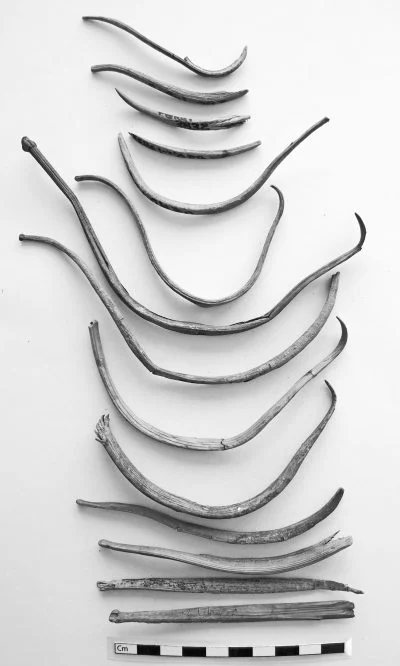
“Wooden Self-Armed Fishhooks from the Salish Sea,” by Grant Keddie is, not surprisingly, about wooden fishhooks and their manufacture and typology. Keddie describes 144 hooks from eight archaeological sites, with dates in the range of 3,000 to 1,000 years ago.
Jenny Cohen’s “Paleoethnobotanical Processes at the Kilgii Gwaay Wet Site” concerns 151 wooden artifacts from an almost 11,000 year-old occupation layer in Haida Gwaii. These include points, wedges, stakes, tool handles, and wood chips. Cohen also discusses the presence of almost 12,000 seeds, mostly waterlogged. Although 22 taxa are represented, they are primarily salmonberry and elderberry.
Part 3, “Unexpected Finds,” includes four chapters, starting with “A 750 Year Old Coiled Basket Cradle from the Stave River Delta, Southwestern British Columbia,” by Duncan McLaren, Kathryn Bernick, and Brendan Gray. This concerns the recovery and description of a cradle or baby carrier. Although the artifact was found in Coast Salish territory, the construction methods are more similar to those used among Interior Salish groups, suggesting interaction between coast and interior groups and indicating, perhaps, the use of the Stave River as a trade route.
In the “The Babine Archaeology Project: Discovery of a Rare Wet Site on the Babine River, North Central British Columbia,” Farid Rahemtulla focuses on the wooden artifacts from the Smokehouse Island site, for which occupation spans the last 1300 years. Recovered artifacts include remains of wooden fish weirs, cordage, and a birch bark container.
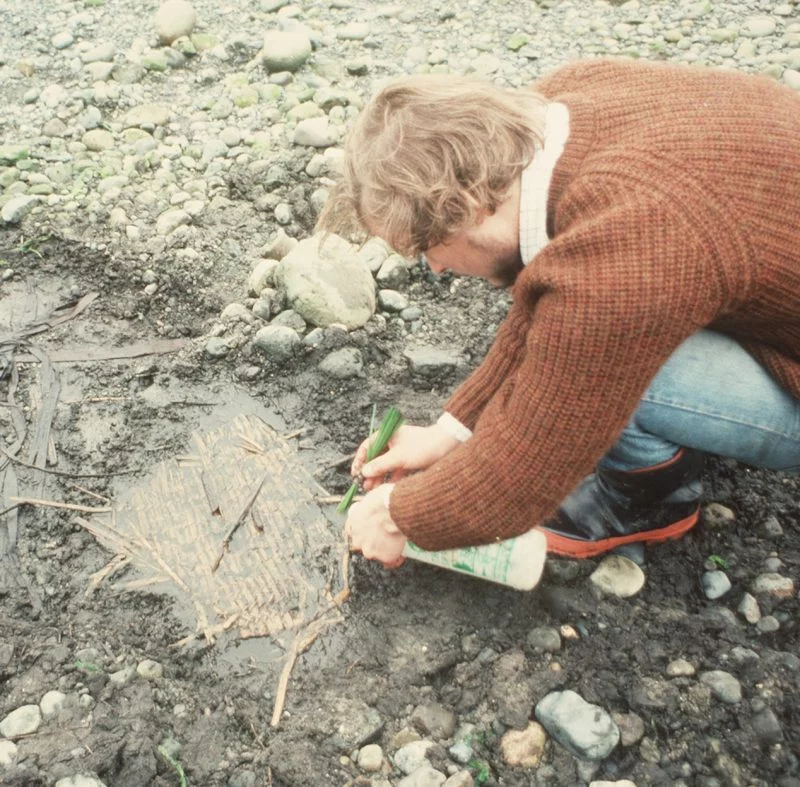
Wooden artifacts from sites on Triquet Island and at Kildidt Narrows — among the oldest archaeological sites on the Northwest Coast — is the focus of “Early and Middle Holocene Waterlogged Materials from Archaeological Sites on the Central Coast of British Columbia,” by Duncan McLaren, Kathleen Hawes, Tyler Graham, Alisha Gauvreau, Jenny Cohen, and Dale Croes. Preserved wood chips at the Kildidt Narrows site have been dated to about 10,500 years ago . More than 200 wooden artifacts from Triquet Island include points, fishhook parts, burned sticks, chips, and perhaps most significantly, an atlatl (spear-thrower) dated to about 7,200 years ago.
The last chapter of Waterlogged, “Another Kettle of Fish: Unexpected Wood Fishing Features at Saratoga Beach,” by Deidre Cullon and Heather Pratt, provides background on fish traps and weirs from both archaeological and ethnographic perspectives and focus on 15 wooden stake features at Saratoga Beach (on the Strait of Georgia south of Campbell River, see front cover of Waterlogged) dating to between 1800 and 1000 years ago. Cullon and Pratt suggest the weirs may have been used to catch multiple species of fish, including salmon, herring, capelin, and smelts.
The book closes with extensive references, brief descriptions of the authors, and an index.
There is much to like about this book. Kudos to the editor, Kathryn Bernick, for bringing together contributors who are among the most respected practitioners of British Columbia archaeology. Bernick’s first-rate editorial oversight in assuring consistency in writing and page length is also evident, and the organization of the chapters is suitable to their contents. Largely jargon-free, Waterlogged appears to be written for broadly educated readers rather than for professionals, which is appealing. The book flows very well, and since it is quite short at 256 pages, it makes for an easy read straight through. The chapters, while coherent and united for the purposes of this volume, are also designed to stand alone as separate contributions, which many readers will find useful.
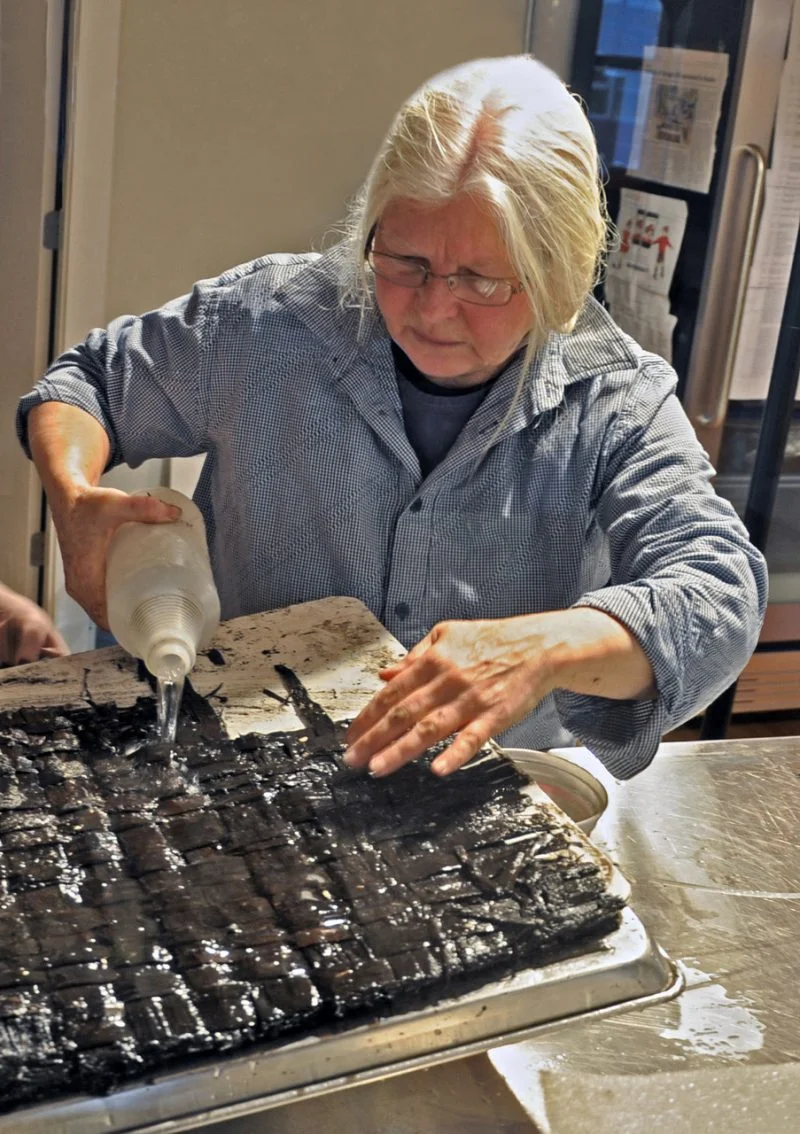
For non-professional archaeologists, Waterlogged provides a good glimpse into field archaeology while not forgetting the discipline’s popular allure, which on the Northwest Coast includes the unexpected discovery of wooden and wood fibre artifacts. These discoveries are important in adding to our knowledge of the human past in early British Columbia and neighbouring regions, and for helping to alleviate the bias of stone. For archaeologists not used to searching for wet sites and recovering waterlogged objects, Waterlogged will also serve as an indispensable guide.
I have very little to criticize about this book. My most obvious, albeit minor, quibble is that its subtitle, Examples and Procedures for Northwest Coast Archaeologists, suggests that the book is only for professional archaeologists. While they will surely find value in the book, there will also be much interest for non-professional archaeologists interested in British Columbia’s deep past, and this subtitle sells that readership a bit short. Another minor criticism is the lack of examples from the time since Europeans arrived. It would have been interesting to learn about some discoveries of waterlogged artifacts from perhaps the past 200 years; but I do understand that this may be an unreasonable criticism. I don’t know if such objects exist and, if they do, if qualified researchers were available to write about them.
Waterlogged is appropriately illustrated with black & white maps, photos, and drawings (approximately five per chapter) and is published in a 6” x 9” format. It is small enough to become part of an archaeology field kit for reference — and large enough to be of value on the whole Northwest Coast region.
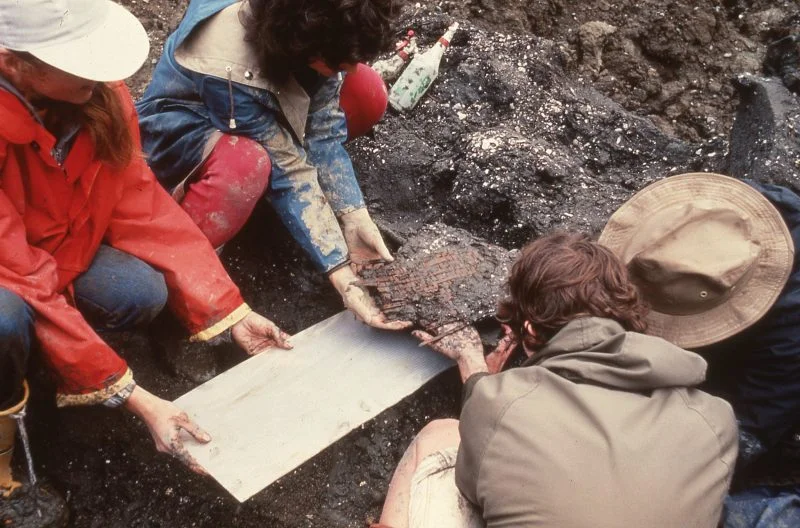
*

Bob Muckle is an archaeologist, currently based at Capilano University in North Vancouver. He has directed archaeological field projects throughout the province since the 1980s, and is currently writing a book titled Archaeology in British Columbia to be published by UBC Press.
*
The Ormsby Review. More Books. More Reviews. More Often.
Publisher and Editor: Richard Mackie
The Ormsby Review is a journal service for in-depth coverage of B.C. books and authors. The Advisory Board consists of Jean Barman, Robin Fisher, Cole Harris, Wade Davis, Hugh Johnston, Patricia Roy, David Stouck, and Graeme Wynn. Scholarly Patron: SFU Graduate Liberal Studies. Honorary Patron: Yosef Wosk. Provincial Government Patron since September 2018: Creative BC
“Only connect.” – E.M. Forster